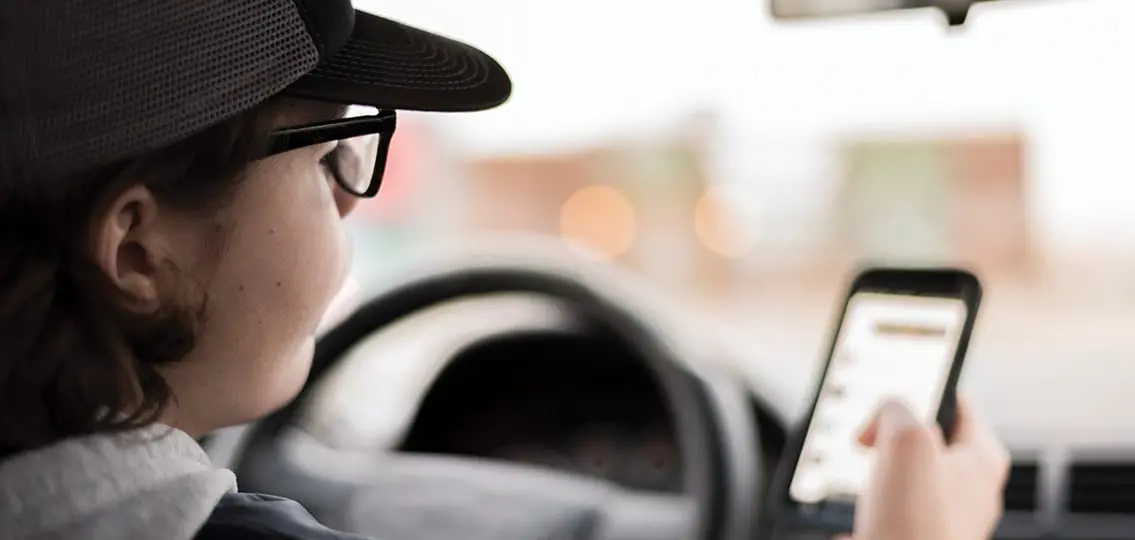Talking about risky teenage behavior reminds me of something I overheard a few years ago. Some time ago, I was at the DMV to renew the tags on my car. I went early in the morning to beat the rush, but I was still number 43 in line—and there were only two women working.

As I waited, I heard one of them ask about their co-worker who had not yet arrived. I was a bit annoyed that I was waiting for a possible “I overslept” employee to make her way to work. And the longer I waited, the more frustrated I became.
I had been there an hour when Sue finally showed up. She rushed in, threw her things down on the counter, burst into tears, and her story poured out. Without warning, her car had died at the intersection of eight lanes of traffic.
In between the sobs and tears she said, “No one stopped to help me.” No one. Instead, people yelled, cursed, and called her all kinds of names.
How could they be angry with her when she was stuck and just needed someone to help her to a safe place? I have often thought about the despair in Sue’s voice—because it’s the same tone I hear from many teenagers during my counseling sessions when they have been stuck in a difficult situation.
- “They didn’t even ask me what happened.”
- “They just got angry.”
- “They wouldn’t listen to me.”
- “They don’t care about how hard it is for me.”
Parents, teachers, coaches, and friends often respond like angry motorists when our teens somehow get stuck in dangerous intersections of life caused by risky teenage behavior.
Risky Teenage Behavior
For the most part our teens know what they should do. They are usually aware of what could happen if they don’t follow the rules or choose to engage in risky behavior.
Research supports the idea that teenagers are willing to take a risk because the payoff—perhaps connection with peers or excitement—seems worth it. In Age of Opportunity: Lessons from the New Science of Adolescence, Laurence Steinberg, Ph.D. reports that the “combination of reward sensitivity and impulsivity makes middle adolescence (from about fourteen to eighteen) a very vulnerable and dangerous time. Teenager’s attraction to rewards impels them to do exciting things, even when they might be risky.”
What teenagers need most in these moments is someone who can lead them to safety so they can assess what is going on. What they do not need, and what may in fact be harmful to them, is anger and insults. It’s difficult to remain calm when our children are in danger, but hurling angry reminders is not effective for teenagers any more then it was for Sue.
Whether your son or daughter has purposely chosen risky teenage behavior or made his or her way into a dangerous situation by accident, the journey towards repair begins with love and care.
Moving Toward Teen Safety: What to Do
1. Don’t blow up.
The voice of calm is essential for a person in a challenging situation. Sue’s husband came to “rescue” her because no one else would take the time to offer her compassion without judgment. If you want to be the person your teen counts on when they are really stuck, check your own anger and leave it in the trunk.
2. Don’t say “I knew this was going to happen.”
It doesn’t matter if a teenager is stuck because of their own irresponsibility or just terrible circumstances. Negativity does not encourage them to trust you when they are stranded.
3. Make safety the main priority.
Save the assessment of what has happened for a time when everyone feels less anxious and focus on getting out of harm’s way. Sometimes dealing with a dangerous situation requires a period of calm to overcome the anxiety of what has happened. It means saying, “We are all a bit anxious (or angry or whatever the emotion of the moment is) so we will talk about what happened later.” I would encourage an added statement about how glad you are that your child is safe. This reminds your child that there is something to be glad about in the moment.
4. Assess the situation.
Assessing requires listening. Listen. Listen. Ask questions. Listen. A great question to ask a teenager is “What do you think happened that caused you to be stuck in an unsafe place?” or “What do you think should happen so you are not in that situation again?” Remember, they are behind the wheel of their lives at this point. Help them be responsible drivers.
5. Work toward repair.
Keeping a teenager in the safety of your home for the rest of their life is not an option. There may need to be some new boundaries and consequences to help minimize the possibility of another dangerous situation. If you are having difficulty allowing your teenager to be responsible for their own safety, it may be time for a family counselor to help get things moving in the right direction again.

Risky teenage behavior can be alarming and stressful. Parents and other people who interact with teenagers really can work together to find a solution to a “broken down” situation. But first we have to pull over and calm down. Make sure the teen is safe. Pause. Assess. Work toward repair. Repeat as necessary.




